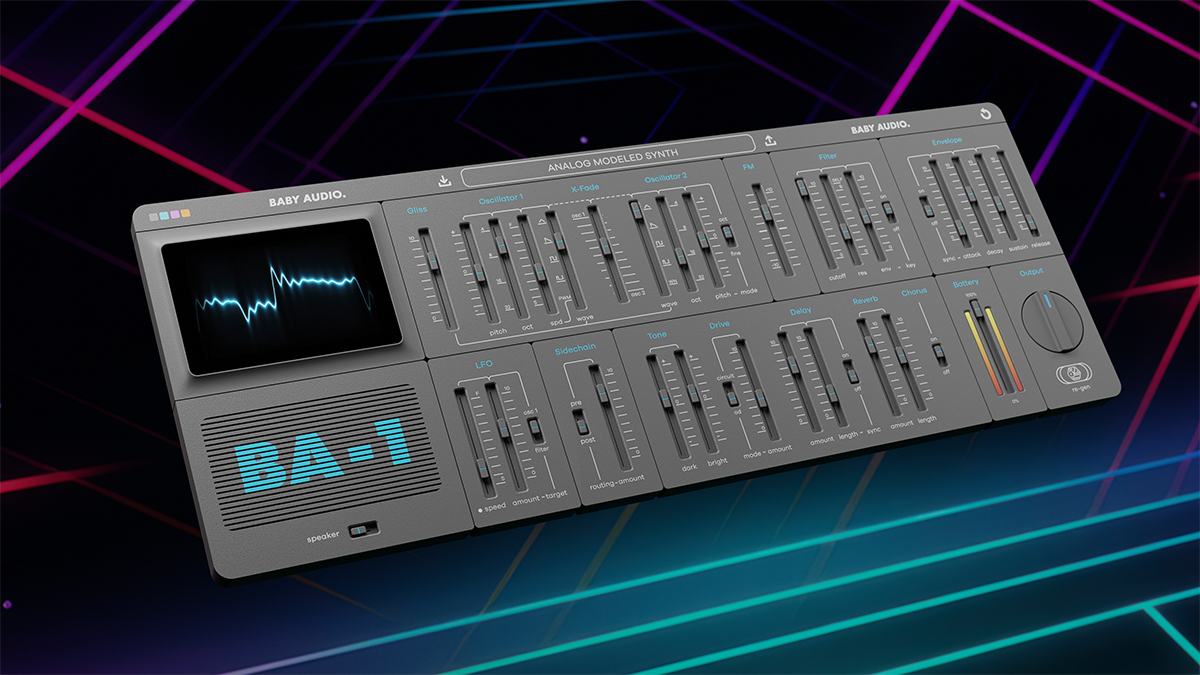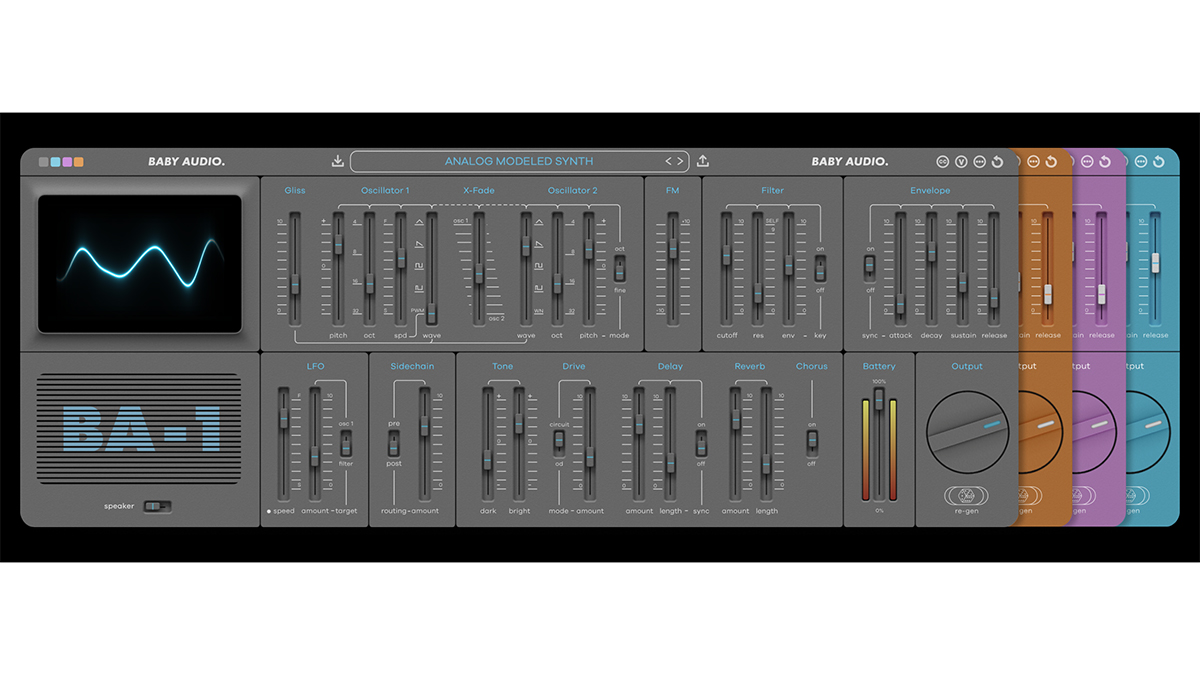
Hot on the heels of the launch of its very first, retro-tailored soft synth, we speak to Baby Audio’s Caspar Bock to find out more about why the company has taken the leap into the canyon of synth-craft, and learn all about the awesome BA-1.
What motivated the creation of the BA-1 synth plugin?
“We’ve always wanted to make synthesisers; but it took eight effect plugins until we finally took the plunge! As for the motivation behind BA-1: with many of our products we have this philosophy of doing ‘evolutions’ instead of ‘emulations’, where we take a piece of hardware and expand upon its concept in a software version.
“We felt that the CS01 could be a really great candidate for a project like that – for two reasons: first of all, because it had a much bigger impact on music history than it’s normally given credit for. And secondly, the original was so limited that it gave us lots of room whereby we could expand upon its legacy.”
What made you choose the Yamaha CS01 as the foundation for the BA-1?
“We wanted our first synth to be a simple project as we knew there’d be a learning curve when making an instrument for the first time. Furthermore, the CS01 has never been properly emulated before and it’s a bit of a cult classic. So we felt like we could actually bring something new to the table with this.
“Finally, because the original CS01 was so limited, we were able to just take its core sound – which is really nice and gritty – and then build our own vision of a perfect simple synthesiser around that. If we had chosen a more complex piece of gear to ‘evolve’, we wouldn’t have had the same creative freedom.”
How long did the modelling process take, and what are some of the BA-1’s USPs? How would you define its sound?
CB: “We started around the end of 2022 – so it took more than a year and closer to one and a half. The end result looks simple but it’s taken a long time to get the sound and behaviour just right. As for USPs, we wanted to make a synth that sounded as musical, gritty and ‘real’ as the original; and I think we came a long way in that regard.

“We also spent a lot of time calibrating each parameter to get the perfect ranges for the slider where it’s hard to make the synth sound bad and it always feels like it’s in somewhat of a sweetspot. One of the qualities of the original CS01 (and other ’80s classics like the Junos) is how they’re hard to mess up because their full sonic range is one big sweet spot. We did a lot of work to make BA-1 feel similarly pleasing and stable, regardless of what you do with it.”
The new features, like the FM oscillator sit side-by-side with the quirky characteristics of the original CS01 (eg: the battery power drain creating artefacts). Why did you decide to keep certain wonkier aspects of the original?
“The sound of the original synth as it lost battery power – or when played through the speaker output – all contributed to its quirkiness. We wanted to bring those qualities into the plugin version as well. Sometimes it’s not the actual features that give an instrument its character, but rather the byproducts of the constraints it was made under. We wanted to make sure to capture all of it with BA-1.”
The effects section is suitably ’80s-leaning. Can you talk us through some of these effects? And also, why do you think it is that people still clamour for that ‘authentic’ analogue flavour?
“Yes, effects are our forte normally, so we wanted to treat the FX section as an integral part of BA-1 and not just an afterthought. We imagined what kind of setting the CS01 would normally have lived in – ie an ’80s/’90s home studio built on a low budget. So we designed our effects with that in mind and modeled them after the sound of cheap digital rack effects for the reverb, chorus and delay, and a guitar overdrive pedal for the distortion.
“We also added the ability to distort the synth through its own circuitry, which is based on a popular mod of the CS01. Sometimes these lo-fi effects just sound more authentic, probably because some of the best records in history were made on a budget.”
Simplicity is something which Baby Audio is famed for. How long do you spend on UI design and is the philosophy of avoiding clutter and menus something you’re always conscious of?
“We spend a lot of time on that! Maybe too much. The design for BA-1 has been underway for almost as long as the codebase. There’s this Mark Twain quote ‘sorry I wrote such a long letter, I didn’t have time to make it shorter’. That concept is true in design as well. The simpler you need something to be, the more time you end up spending on it. Especially with something like a synth, where you could, in theory, have hundreds of parameters.”
What are the most fun (or off-the-wall) things you can do with BA-1?
“I would say draining the battery, bending the circuits and applying the built-in speaker. That will give you a lo-fi sound that’s hard to find in other soft synths.”
Baby Audio is a company that’s well known for its mixing and signal-modifying-angled plugins, but with the BA-1, a whole new avenue has opened up. Are you planning further softsynths (and soft-instruments) and is this the direction in which the company has always intended to go?
“Yes! We always wanted to make synths and instruments as well. That doesn’t mean we’ll forget about putting out new effects, but we want to slowly get to a point where our catalogue gets to 50/50 between instruments and effects.
“We have a lot of instrument ideas in the pipeline. Some of them would be other ‘evolutions’ of hardware gear, whereas others are entirely new concepts. We’re very excited to bring it all out!”







